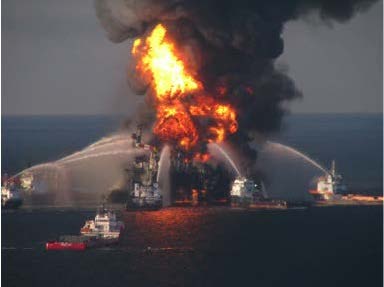Types of Investment Risk: Environmental
Published on June 17, 2013
We are in the middle of a series breaking down the various types of investment risks. You can read the introduction here. We are posting one article covering one risk each weekday until the series is complete.
Last Friday we covered Dilution, and today we are covering...
Risk #6: Environmental
 Description: Environmental risk refers to the potential for a government regulatory body to assess damages and/or require clean up of a recognized environmental condition (REC). Environmental risk can be devastating since, in some cases, the potential liability to the investor can be unlimited--affecting a person's entire net worth if a REC caused by or attributed to an investor has caused serious environmental damage and/or requires extensive action to address or prevent environmental contamination.
Description: Environmental risk refers to the potential for a government regulatory body to assess damages and/or require clean up of a recognized environmental condition (REC). Environmental risk can be devastating since, in some cases, the potential liability to the investor can be unlimited--affecting a person's entire net worth if a REC caused by or attributed to an investor has caused serious environmental damage and/or requires extensive action to address or prevent environmental contamination.
Primarily Applies to... Real Estate that has had businesses on or near the land being acquired that have operated with chemicals or substances known to cause recognized environmental conditions--potential unlimited liability exists for this type of investment. This risk, though to a lesser degree for common shareholders, also applies to companies that create, manufacture, distribute, or broker substances that are known to be or cause recognized environmental conditions.
Real World Examples: TheExxon Valdez and BP oil spill crises are probably the best examples of major environmental risk. On a smaller scale, real estate with or near an auto shop, dry cleaner or gas station in operation (to name a few) can also pose environmental risks to the tenant running the business or the landlord who owns the real estate.
Extreme Avoidance Measures: Do not invest in companies or real estate that have been exposed or that regularly handle recognized environmental hazards or chemicals/substances known to cause recognized environmental conditions.
Potential Mitigations: For real estate: retrieve Environmental Phase 1 or Phase 2 reports for acquisitions to ensure there are no recognized environmental conditions and avoid leasing real estate to tenants who may cause RECs in their day-to-day operations. For companies: stick to larger organizations that have the infrastructure to handle environmental issues and the financial wherewithal to clean up or pay for any environmental issues along the way.
Stay tuned, tomorrow's highlighted risk is: Government Regulation/Taxation.
.
